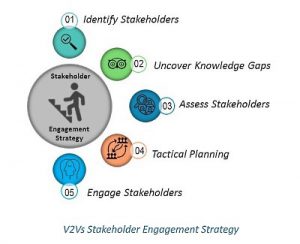
Think about all of the meetings you attend every day designed to communicate and collaborate. Why so many meetings with so many opinions all to accomplish the same goals-driving a brand? It’s the question that so many biopharma, capital equipment, and device employees ask themselves every day when promoting new therapeutic advances for improved patient care. Yet corporations have evolved to be meeting-centric because meetings do, in fact, drive change. The reason is quite simple as pointed out in the groundbreaking book, The Wisdom of Crowds, by James Suroweicki – the aggregation of information in groups results in decisions that are often better than what can be made by any single member within the group.
Despite these seemingly excessive conversations, why do we continue to struggle to build the basics of engagement and appropriately respond to increased pressure to succeed? In other words, harnessing the power within the organization is a major challenge for all organizations regardless of their size. This overabundance of information creates confusion over what is essential. We ask: Who should be leading the charge? How should the groups be organized? Which goals can be integrated and aligned? How do we measure all of the critical components that drive us toward our common goals?

At Vision2Voice, through our experience managing brands and engaging with clients, we’ve innovated a Stakeholder Engagement Strategy (SES) to help our clients simplify what can be complex. Key opinion leaders (KOLs) and thought leaders (TLs) play an important role in creating and maintaining your brand’s value. It cannot be measured with traditional return on investment (ROI) methods, therefore, flawless planning and implementation are essential.
Vision2Voice has developed a 5-step course of action that supports clients through the SES process. Step 1 begins with identifying who the stakeholders are, and what they do internally and externally helps initiate the process. The creation of the stakeholder list is the first result of the strategy.
Once the stakeholder brain trusts have come together, Step 2 aims to uncover the significant knowledge gaps that will span multiple stakeholders within the organization. It can be an insecure moment in time when you sometimes recognize that key employees hold vital information and strong relationships with certain external stakeholders. When only a few people hold great value, it may lead to a gap that can make your organization vulnerable. Aligning these gaps with your objectives will be valuable assets to achieving greatness.
Not all stakeholders are created equally. During Step 3, analyze those individuals who may hold the greatest opportunities for your brand. Are they the external KOLs? Or perhaps they are the payers for your brand, or even patient advocacy groups. Holding these discussions internally and creating a plan to assess these stakeholders will provide you with an engagement grid and stakeholder map that will help guide you through the murky waters ahead.
Throughout these first 3 steps, you’ll notice that stakeholder group leaders will want to discuss tactics, but that process begins next with Step 4: tactical planning. Organizational leaders are typically tactical planning machines. This aspect is what drives them and this stage is the time to unleash the chains to allow for creative planning sessions. Once this part of the planning cycle is completed, you’ll have a detailed communication and engagement plan.

Finally, during Step 5 – engaging stakeholders – is where the rubber meets the road. All of the planning that culminates to this point is designed to ensure that precious resources are directed efficiently and that the organization is aligned to focus on what is essential based on the time and financial constraints. This step requires execution of the strategic communications plan and engagement plan, provides for monitoring by using a world-class system (e.g., Vision2Voice’s own SES platform), and monitors progress.
This overall process lives and breathes. Allow changes to be made in order to fit your unique situation. Most of your time will be spent fine-tuning the tactical planning (Step 4) and driving the success of Step 5 – engaging stakeholders. It is a good idea to regularly check back and review Steps 1 through 3 to ensure a tight strategy.
While you won’t be running ROI reports on this process, organizations have recognized the value of SES and its implementation more now than ever before due to its effectiveness. The theory surrounding the wisdom of crowds is no fluke. Better decisions and planning occur in groups of talented people. Harness the power of the people within your organization with successful SES strategies that ultimately lead to better patient care.





